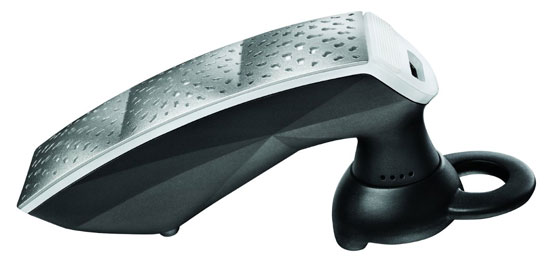This sounds neat: HP has announced a wireless mouse that uses Wi-Fi, so it works with any Wi-Fi-equipped computer–no dongle or Bluetooth required.
Tag Archives | Bluetooth
Tunebug Turns Tabletops Into Boom Boxes
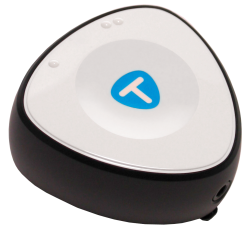 A little smaller than a hockey puck and triangular in shape, a Tunebug turns pretty much any hard surface into a decent speaker for digital music from any device it can connect to via a standard audio jack or, depending on the model, Bluetooth.
A little smaller than a hockey puck and triangular in shape, a Tunebug turns pretty much any hard surface into a decent speaker for digital music from any device it can connect to via a standard audio jack or, depending on the model, Bluetooth.
While David Pogue at the Times recently took a look at Bluetooth speakers, they were (as I understood it) conventional speakers. Tunebug’s SurfaceSound technology makes the surface part of the speaker.
The company offers a wired version, the $70 Tunebug Vibe, that connects to a digital audio source (e.g. iPod, laptop, MP3 player) with a standard 3.5mm headphone jack. Tunebug says the Vibe’s internal rechargeable battery can power the device for up to 5 hours.
No comments
Jawbone's New Era of Bluetooth Headsets
Almost exactly one year after releasing the stylish Jawbone Icon, Bluetooth headset maker Aliph is back with the Jawbone Era, a new $129 model that’s meant as a higher-end complement to the $99 Icon, which remains on the market. It continues to address my own long-standing gripe about all headsets–I can never remember how to use the darn things–by being the first model I’ve seen that you can operate without using any buttons other than the on/off switch.
Aliph VP Travis Bogard provided me with an Era for review and told me that the headset was also designed for an, um, era in which relatively few people choose to use a Bluetooth headset to make traditional calls, but more and more folks are doing more and more audio-related things with their smartphones–from using Skype to listening to Pandora and podcasts.
One comment
Battle of the Bluetooth Phone Gizmos
 Among our twenty-five Last Gadget Standing semi-finalists are two Bluetooth-enabled phone accessories which–whatever you think of them–aren’t the same ol’ same ol’.
Among our twenty-five Last Gadget Standing semi-finalists are two Bluetooth-enabled phone accessories which–whatever you think of them–aren’t the same ol’ same ol’.
Sony Ericsson’s $85 LiveView is a tiny screen that shows incoming calls, Facebook updates, song titles, and other information, so you can see what’s up without taking your phone out of your pocket. And the $29.95 Bringrr is a little dongle for your cigarette lighter that has one purpose: It sounds an alarm and flashes a light if you get in your car and don’t have your phone with you.
Your opinion first:
2 comments
Plantronics Headsets: Small and Subtle or Big and Bold?
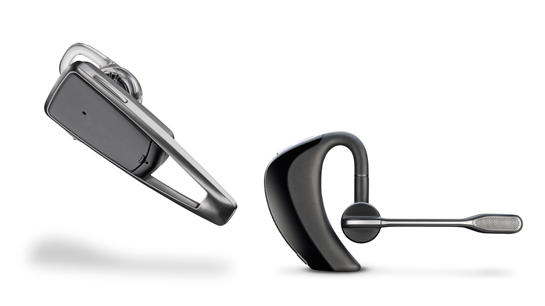
Last Gadget Standing Nominees: Plantronics Savor M1100 and Voyager Pro+ headsets
Price: $99.99 each
If you’ve got a hundred bucks to spend on a Bluetooth headset, Plantronics offers two possibilities–with lots of differences and some features in common. The Savor (on the left above) is small, inconspicuous, and straightforward (and way less flashy than its Jawbone competitors–Plantronics representatives have told me they think people like headsets that match the aesthetic of their phones). It aims to improve sound quality by packing three microphones, and can be worn without an earloop (it comes with one, but it’s optional).
On the other hand, the Voyager Pro+–an update to an earlier model the Voyager Pro–is unapologetically big and obvious. (It may pack modern technology, but it looks like a spiritual descendant of the earpieces that mobile-phone users wore when headsets first got popular.) It uses two microphones rather than three, but you can adjust the long boom so it’s in close proximity to your mouth.
Both models offer AD2P, which lets phones route music, GPS instructions, and other audio to them as well as phone calls. They work with Plantronics’ Vocalyst text-to-speech service, which can read texts and e-mails; they speak information such as the battery’s status into your ear; and support multipoint technology that lets them work with two phones.
The Savor M1100 and Voyager Pro+ are available now.
No comments
Your Life, Recorded for Posterity
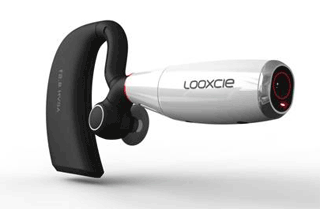 Last Gadget Standing Nominee: Looxcie
Last Gadget Standing Nominee: Looxcie
Price: $199
 When I was a kid, I freaked out my sister by theorizing that human beings would someday be able to use miniature cameras to record their entire lives for later playback. I believe that the cameras I envisioned would be implanted in the user’s forehead–but except for that tiny detail, Looxcie (great name!) is the invention I had in mind.
When I was a kid, I freaked out my sister by theorizing that human beings would someday be able to use miniature cameras to record their entire lives for later playback. I believe that the cameras I envisioned would be implanted in the user’s forehead–but except for that tiny detail, Looxcie (great name!) is the invention I had in mind.
Looxcie looks like a rather oversized Bluetooth headset–and can, in fact, work as one. But it’s also a video camera that’s continuously buffering thirty seconds’ worth of footage. What you see, it sees–and if you push a button, it’ll save the last half-minute and keep on recording. You can transfer the video it captures to your Android phone for saving and sharing; an iPhone app is on its way.
I still like the idea–and I bet it would still freak out my sis.
3 comments
A Second Display for Your Android Phone
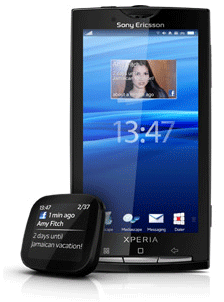 Last Gadget Standing Nominee: Sony Ericsson LiveView micro display
Last Gadget Standing Nominee: Sony Ericsson LiveView micro display
Price: About $85
 Everyone likes Android phones with humongous screens, right? Sony Ericsson is betting that some folks who own those phones would like to keep them in their pocket or purse and control them with the LiveView, a tiny squarish display that can communicate with several of the company’s Xperia handsets via Bluetooth. It can display information such as incoming calls, Facebook and Twitter updates, and “now playing” details on music, and you can wear it on a clip, fasten it to your keychain, or even strap it on like a wristwatch.
Everyone likes Android phones with humongous screens, right? Sony Ericsson is betting that some folks who own those phones would like to keep them in their pocket or purse and control them with the LiveView, a tiny squarish display that can communicate with several of the company’s Xperia handsets via Bluetooth. It can display information such as incoming calls, Facebook and Twitter updates, and “now playing” details on music, and you can wear it on a clip, fasten it to your keychain, or even strap it on like a wristwatch.
The LiveView automatically scans your Xperia phone for compatible applications, and will be available in “selected markets” by the end of this year.
5 comments
Personal Workout Plans to Go
Last Gadget Standing Nominee: BodyMedia FIT Armband BW
Price: $249
Calorie balance–calories consumed vs. calories 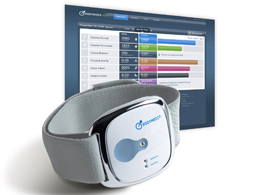 burned– is the key ingredient to weight loss. BodyMedia FIT, a body monitoring weight management system, lets users to actively manage their weight by checking their calorie balance on demand. The user completes his or her calorie balance profile using the app’s food logging tool, then the Armband BW provides near real-time caloric burn data, as calculated by BodyMedia’s system. Now achieving the desired calorie balance is as easy as using the BodyMedia FIT app to create a personalized workout based upon caloric, activity, or step targets. And for those seeking extra motivation, the app even lets you choose music from your favorite playlist to power you through those final tough calories.
burned– is the key ingredient to weight loss. BodyMedia FIT, a body monitoring weight management system, lets users to actively manage their weight by checking their calorie balance on demand. The user completes his or her calorie balance profile using the app’s food logging tool, then the Armband BW provides near real-time caloric burn data, as calculated by BodyMedia’s system. Now achieving the desired calorie balance is as easy as using the BodyMedia FIT app to create a personalized workout based upon caloric, activity, or step targets. And for those seeking extra motivation, the app even lets you choose music from your favorite playlist to power you through those final tough calories.
The Armband BW will be available on November 15th.
No comments
Native Union's Retro 'Pop Phone' Handsets
 When you think of phone headsets, its probably a good bet that what you’re thinking of its the traditional on ear kind. Native Union has taken this and given it a retro feel, launching a line that looks like the traditional corded phone handsets that many of us older folk would be familiar with.
When you think of phone headsets, its probably a good bet that what you’re thinking of its the traditional on ear kind. Native Union has taken this and given it a retro feel, launching a line that looks like the traditional corded phone handsets that many of us older folk would be familiar with.
The Pop Phone comes in pink, yellow, dark blue, dark purple and green. The company had already offered two other less “poppy” colors in red and black. The included 3.5mm jack will plug into any iPhone, iPad or BlackBerry, and a button on the inside of the handle would allow for one touch answer and disconnect. The Pop Phone also includes noise-cancelling, which should improve call clarity in noisier situations.
Native Union says one of the most compelling uses for this is on the iPad, as the handset would work with Skype and turn the tablet into a phone. The price is about the same as most other handsets, coming in at $29.99. I have to credit the company with being creative, but will these really sell?
Also available from the company are other less pop-influenced designs including the MM04, which retails for $199.99. That unit can connect up to two phones simultaneously via Bluetooth, and seems more catered towards the business set.
Will the Pop Phone sell though? I’m guessing if you’re a frequent Skyper, maybe getting this for your iPad might be the missing link. But I don’t know how many iPhone users would be willing to plunk down $30 for that old retro feel. I guess we’ll see.
15 comments
A Bluetooth Headset With Its Own iPhone App
 Hands free headset Sound ID has actually managed to innovate in the headset space, where you’d probably not think there was much more room for drastic improvement. It’s Sound ID 510 Bluetooth headset is actually the first to include an iPhone app that controls the functionality of the device itself.
Hands free headset Sound ID has actually managed to innovate in the headset space, where you’d probably not think there was much more room for drastic improvement. It’s Sound ID 510 Bluetooth headset is actually the first to include an iPhone app that controls the functionality of the device itself.
The device, which launched earlier this month, is getting good retail support — both AT&T and Apple are selling the $129.99 USD headset in select stores. Heidi Adams, Sound ID’s marketing chief, told me that the feature set that the 510 brings is practially unheard of at this price point, making it very competitive.
Besides the app, the device features noise and wind canceling algorithms, touch-sensitive volume adjustment, multi-point technology to connect the headset to more than one device at once, and an Environmental mode which amplifies sound around the device when not in a call.
But as I said earlier, the real power of the 510 is in the iPhone app. At first use, the iPhone app will allow you to set specifically how the headset audio will sound. This setting is then saved, and can be changed at any time. A sound meter actually acts as a decibel meter, giving a sound level reading as heard through the headset’s microphone, and a battery level indicator tells you how much charge the unit has left.
Sound ID has also included a “Find my Headset” feature, which when pressed will cause the headset to emit a loud beeping noise to assist in locating it.
I did not have a chance at the show to actually demo the unit, but we have one on the way for our review. I will definitely report back on my experiences with the device.

